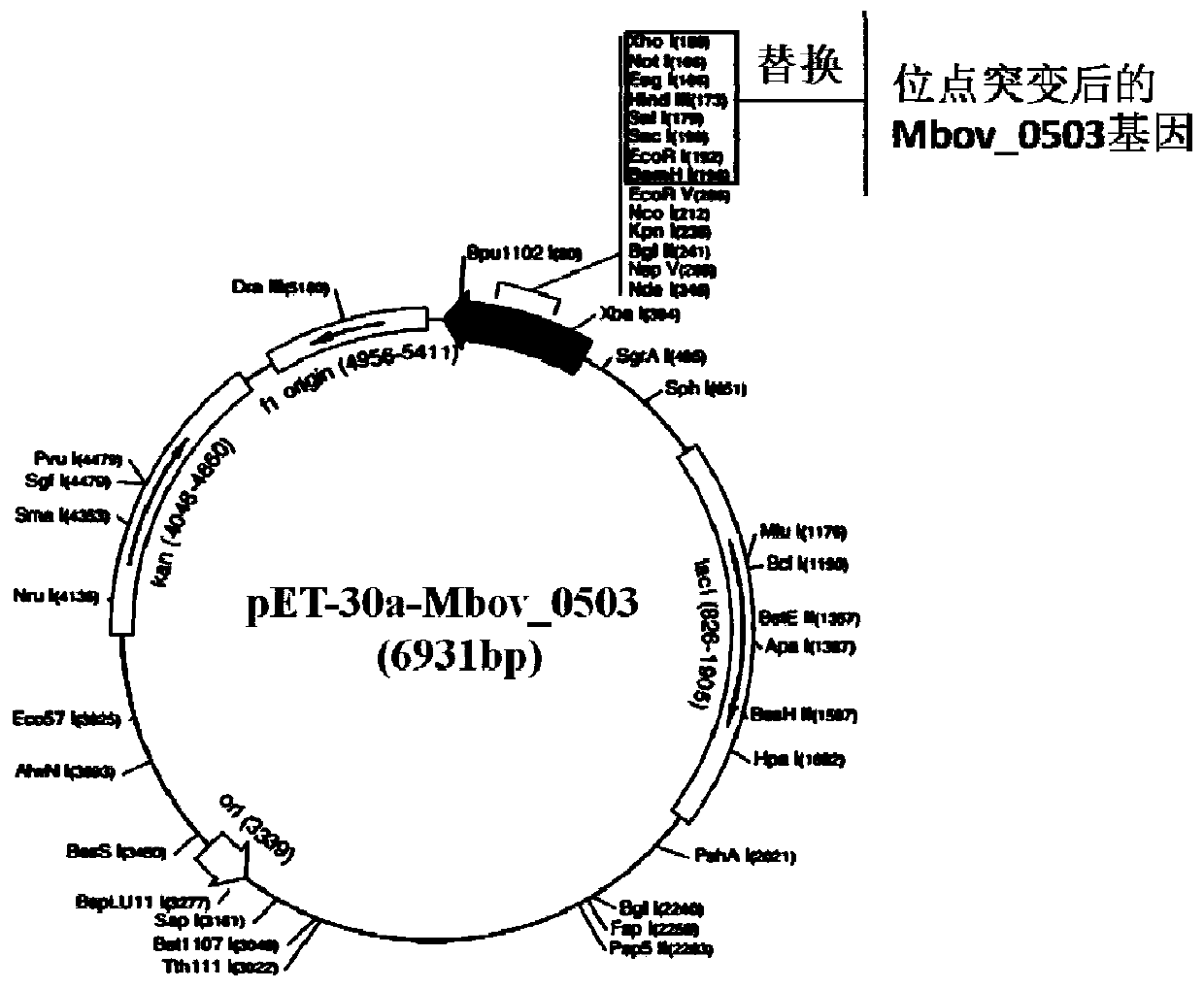Mutant having reduced adhesive ability and with deleted mycoplasma bovis gene
A technology of mycoplasma bovis and gene deletion, applied in the direction of microorganism-based methods, microorganism measurement/inspection, biochemical equipment and methods, etc., can solve problems such as unclear effects
- Summary
- Abstract
- Description
- Claims
- Application Information
AI Technical Summary
Problems solved by technology
Method used
Image
Examples
Embodiment 1
[0045] Example 1: Screening and identification of adhesion-deficient mutants of Mycoplasma bovis
[0046] 1. Preliminary screening of adhesion-deficient mutants of Mycoplasma bovis
[0047] (1) Cultivation and enumeration of mutant strains of Mycoplasma bovis: The mutant library of Mycoplasma bovis was constructed by the Ruminant Pathogen Division of the State Key Laboratory of Agricultural Microbiology, Huazhong Agricultural University where the applicant is located, and stored at -80°C. The Mycoplasma bovis mutants with different ORFs inserted into the transposon were inoculated with liquid medium (PPLO powder 10.5g, sodium pyruvate powder 0.5g, yeast 2.5g, and 440mL ddH 2 Diluted to volume and steam sterilized at 121°C for 18 minutes, added 50 mL of 10% horse serum, 5 mL of 10×MEM, 1 mL of 400,000 units / mL penicillin solution, 500 μL of phenol red growth indicator) to recover, placed at 37°C, 5 %CO 2 Cultivate in the incubator for 36 hours, that is, after reaching the log...
Embodiment 2
[0052] Embodiment 2: Expression of Mycoplasma bovis Mbov0503 protein
[0053] 1. Cloning and expression of Mycoplasma bovis Mbov_0503 gene
[0054] Because E. coli is to the preference of codon, in the present invention, the codon UGA of tryptophan of encoding tryptophan in the Mycoplasma bovis genome is used as terminator in Escherichia coli, therefore, when expressing Mycoplasma bovis gene with E. coli, need to mycoplasma gene Mutations were performed so that the codon UGA was mutated to the codon UGG for expression of tryptophan in E. coli. In order to express the Mbov_0503 gene of Mycoplasma bovis, the applicant mutated the corresponding 5 codons of the gene using self-designed PCR primers. The specific steps are: using the Mbov_0503 gene in Mycoplasma bovis HB0801 (GenBank accession number CP002058) as a template , using 6 pairs of primers designed as follows (respectively: 0503a1 / 0503a2, 0503b1 / 0503b2, 0503c1 / 0503c2, 0503d1 / 0503d2, 0503e1 / 0503e2, 0503f1 / 0503f2) to ampli...
Embodiment 3
[0099] Example 3: Detection of Adhesion Ability of Recombinant Protein rMbov0503
[0100] 1. Adhesion detection of recombinant protein rMbov0503 to EBL cells
[0101] (1) Shop 1×10 5 EBL cells were placed in a 24-well plate at 37°C, 5% CO 2 Cell adherent culture under the condition;
[0102] (2) Interact 10 μg of Mbov0503 with EBL cells for 1 hour, with a reaction volume of 200 μL, so that the protein can fully contact with the cells, and set up the following controls: only MEM basal medium (Hyclone) was added as a blank control; rMbov0503 was treated with anti-Mbov0503 The polyclonal antibody was incubated at 37°C for 1h; rMbov0503 was incubated with mouse negative serum at 37°C for 1h;
[0103] (3) Sealing: wash the non-adhered protein with the open PBS gently, wash 5 times, add PBS to wash in different directions each time, add 5% skimmed milk to seal at room temperature for 2 hours, wash 3 times with PBS ;
[0104] (4) Fixation and permeabilization: 1 mL of commercial...
PUM
 Login to View More
Login to View More Abstract
Description
Claims
Application Information
 Login to View More
Login to View More - R&D
- Intellectual Property
- Life Sciences
- Materials
- Tech Scout
- Unparalleled Data Quality
- Higher Quality Content
- 60% Fewer Hallucinations
Browse by: Latest US Patents, China's latest patents, Technical Efficacy Thesaurus, Application Domain, Technology Topic, Popular Technical Reports.
© 2025 PatSnap. All rights reserved.Legal|Privacy policy|Modern Slavery Act Transparency Statement|Sitemap|About US| Contact US: help@patsnap.com



